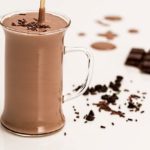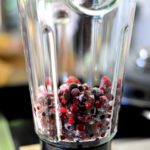There are two ways to make soap (cold process and hot process) and if you are going to make cold process soap you will need to use a hand blender. The classic way of making soap did not involve the use of stick blenders, it involved the use of real sticks (or wooden spoons). Basically it was a very long and tedious process. However, with the advent of machine powdered blenders, you can speed up the process and get your soap to trace super fast.
This article is going to mainly focus on the best stick blender for making cold process soap. It will assume that you are already aware of the other items needed to make cold process soap:
- Non-Reactive Container To Mix Fat, Water, and Lye
- Safety Goggles (To Protect Your Eye)
- Lye (sodium hydroxide)
- Fat (oilve oil, coconut oil, etc…)
- Mold (some sort of container to store your liquid soap in so that it can harden)
- Stick Blender
Why Use A Stick Blender To Make Soap
You don’t have to use a stick blender to make cold process soap. You can simply add lye to water, stir it around with a wooden stick, and then pour in the fat. Then, you can use a wooden stick to mix it around while it saponofies. This will take a long time, however. It is much easier to simply use a stick blender. These will help to speed up the trace. The term trace refers to the point where the soap is ready to be put into the mold.
There are some people who suggest that you might want to use a blender, but these are not really the best for a few reasons. First, a jar style blender won’t allow for as much soap. If you are using a large soap safe bucket, you will be able to make much more soap. You won’t be limited by the size of the blender jar. So, what you should really be looking into is a stick blender. With these you will be able to freely move the blender around a very large container.
You don’t have to be super picky when it comes to choosing a stick blender. The blender doesn’t have to be super sophisticated and does not have to have a multitude of features. What you are basically looking for is a stick designed hand blender that will not have any parts that will react with the lye, and also one that has an easy to operate design. You also want a blender that will easily clean up and not be too hard to use during the actual soap making process. Remember, if this is your first time working with soap, then you have to keep in mind how dangerous lye is. You don’t want to have a stick blender that is going to cause you to have to fidget with settings.
Easy To Use and Durable: The Most Important Features In A Soap Blender
- It has to be easy to maneuver. You don’t want something that will cause you to get tangled up when working. Working with raw soap is tricky. You will have hot oil (most recipes will call for the oil to be heated to the same temperature as the lye/water mix).
- It should be easy to clean. Just as when you are finished making a green smoothie and you want to easily clean it out, you want a stick blender that is easy to clean once you have finished making soap. So, this means that you want something that won’t have a tricky blade removal process.
- Durable. It needs to be durable. You don’t want a fragile blender when making cold process soap. Cold process soap (also hot process, but that goes without saying) will require you to use a stick blender that can stand up to caustic chemicals. That said, you should never stick the blender right into the lye and water mixture. Use a plastic mixing spoon made from a hard plastic that is non-reactive.
Lightweight and Long Cord (or Battery Operated)
I personally have always used a corded blender when making cold process soap because I think they are the best made models on the market. The cordless models (the ones that are battery operated) I have always found to be a bit lacking (and you always have to remember to charge them). So, i recommend a lightweight model with a long cord.
The Best Blender For Making Cold Process Soap
I like this one. There are a few reasons this stick blender stands out. First, it’s from a well known brand that has a reputation that you can trust. You want to steer clear of off-market brands of blenders where you can’t trust them. When you are working with lye and making soap, you want to make sure you are using a stick blender that won’t fail you. So, I recommend choosing one of the best known brands in kitchen appliances, Cuisinart.
Other Soap Making Supplies You Will Need
In addition to a stick blender, you will want to make sure you have all of the other supplies for making your first batch of cold process soap.
- Bucket For Making Cold Process Soap
- Thermometer
- Digital Scale
- Lye
- Fat
- Essential Oil
- Soap Mold
- Safety Eye-wear
If you have all of the above mentioned items, and a recipe, you will be all set to make cold process soap. You need to make sure you mix your lye in something that is non-reactive (for example, never use aluminum). You also need to make sure that you measure the lye out exactly. This cannot be overstated. If you don’t use the right amount of lye, you will not make proper soap. The soap either will be too lye heavy (which is dangerous as it can cause skin irritation) or it won’t trace and you will be left with a puddle of non-soap mess.
Here’s a quick list of the essentials. You can get them all from Amazon. The one thing to note is that if you are going to buy lye, make sure to read up on it and make certain that you are aware of all of the dangers associated with using lye. It is something that is highly caustic, so you never want to be cavalier with it. You want to take care and be cautious. Also, don’t just assume you can get lye “drain cleaner” and use this as the ingredients for your soap. The drain cleaner lye will often times have small bits of metal inside of it, so make sure you avoid this at all costs.
Soap Mold (Loaf Style)
A soap mold is really important, in fact, aside from a soap blender, it’s probably one of the most important items you need aside from the actually ingredients to make the soap (oil, water, and lye). If you don’t have a proper soap mold then you are going to be dealing with making due with some sort of makeshift
Bar Soap Mold Style: Make Individual Sized Soaps
These soap molds are perfect if you want to make individual sized soaps and don’t want to busy yourself with cutting the soaps by hand. This is ideal if you’re making soaps with the intention of selling them or giving them as gifts.
Digital Scale: Measure The Lye And Oil Correctly
You need to be extremely precise when it comes to making soap. If you measure the lye incorrectly, then what you will be dealing with is an issue of soap that either doesn’t saponify correctly, or else is too lye heavy. You should use a digital soap scale to measure the oil, lye and water.
Make sure you always use a good soap calculator to ensure you are using the correct ratio of lye, water, and oil.
——————
Photo Credits:
Bars of Soap via Flickr
2020 Update:
I’ve written a good companion piece to this that covers stick blenders and soap making. I think it might be helpful, so I wanted to link to it here.
Related Posts

Hi Everyone!
Jenny O’Brien here. Nutritionist & personal trainer. Just your average vegetarian and smoothie fanatic!
If you have any questions, or you’d like me to cover a particular topic, drop me a line and let me know!
Thanks!






